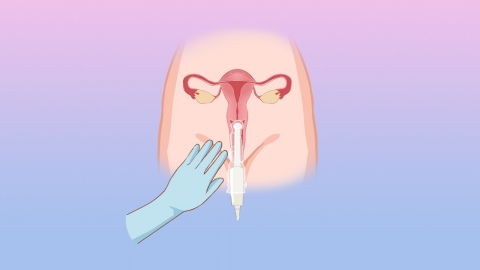What causes scanty lochia after abortion?
Generally, reduced lochia after an abortion may be caused by thorough surgical clearance, individual physical differences, intrauterine adhesion, endometrial injury, or poor uterine involution. Depending on the specific situation, improvements can be achieved through general care, medication, or surgical treatment. Detailed analysis is as follows:

1. Thorough Surgical Clearance
If the pregnancy tissue and decidua are completely removed during surgery, the endometrial wound surface will be small, resulting in less bleeding and naturally reduced lochia. After surgery, it's important to rest adequately, enhance nutrition, and consume more protein-rich foods to promote recovery.
2. Individual Physical Differences
Some women have better blood clotting function, allowing rapid hemostasis at the surgical site after abortion. Additionally, strong uterine contraction ability helps control bleeding promptly, leading to less lochia. Maintain a regular sleep schedule, avoid fatigue, keep the external genitalia clean, and prevent infections.
3. Intrauterine Adhesion
Abortion can damage the basal layer of the endometrium, causing adhesion between the anterior and posterior walls of the uterine cavity, which affects the discharge of menstrual blood and lochia. Under medical guidance, medications such as estradiol valerate tablets, estradiol cyproterone acetate tablets, or enteric-coated aspirin tablets may be taken. In severe cases, hysteroscopic adhesiolysis may be required.
4. Endometrial Injury
Inappropriate surgical technique may lead to excessive endometrial damage, reducing glandular secretion and slowing wound healing, thereby decreasing lochia. Under medical supervision, medications such as conjugated estrogens tablets, dydrogesterone tablets, or combined oral contraceptives may be used to promote endometrial repair.
5. Poor Uterine Involution
After an abortion, weak uterine contractions may result in a small amount of retained blood within the uterine cavity that cannot be discharged smoothly, manifesting as scanty but prolonged lochia. Under medical guidance, oxytocin injection, leonurus granules, or xinshenghua granules may be administered to enhance uterine contractions.
Uterine care requires attention to detail. After an abortion, observe the amount, color, and consistency of lochia daily, and seek medical attention promptly if any abnormalities occur. Focus on warm, balanced meals, avoid raw, cold, and irritating foods, and ensure proper warmth for the abdomen. Strictly follow postoperative precautions—avoid sitz baths and sexual intercourse in the short term—to provide an optimal environment for uterine recovery.





